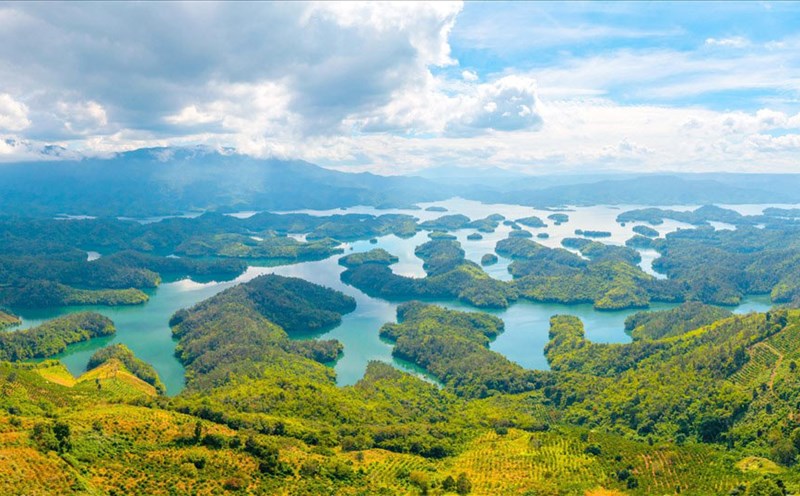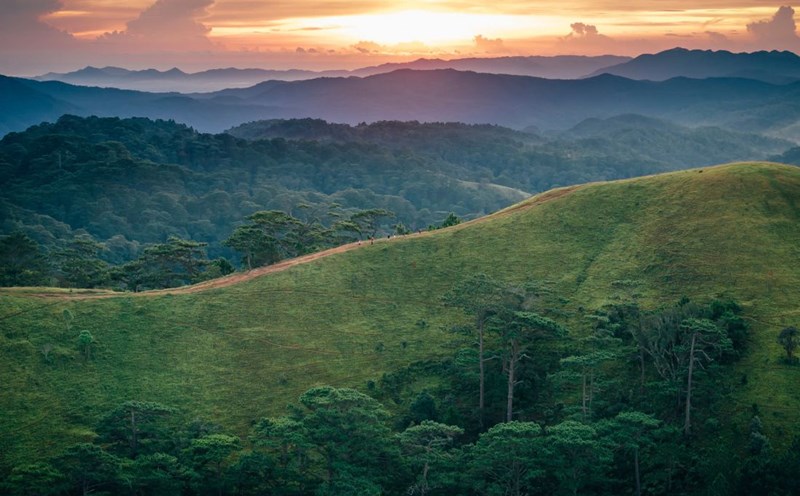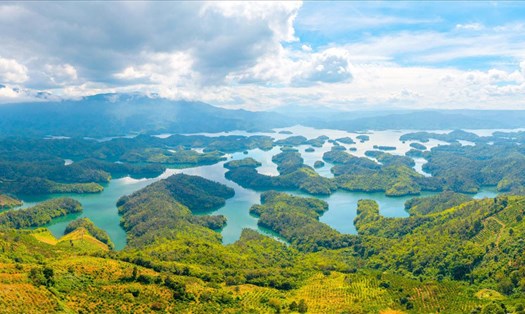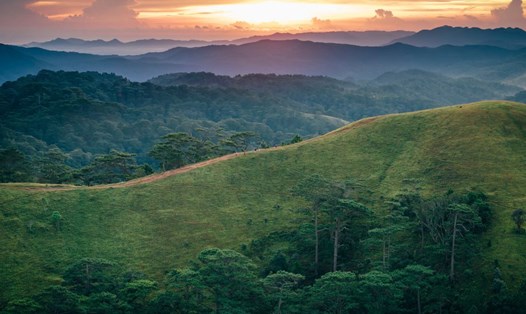Located right in the center of Buon Ma Thuot ward, Ako Phong village still retains the original shape of a traditional Central Highlands village. This is not only the place of residence of the E De people but also a space to preserve valuable indigenous cultural features, from traditional long houses, the resounding of gongs to brocade weaving and Vinh Cau.
The beauty of E De village
In the E De language, ako means upstream, and Dong means valley. This name originates from the fact that this place is the origin of many streams such as Ea Ding, Ea Pui, Ea Dung... especially Ea Nuol stream - the largest stream flowing through Buon Ma Thuot area. In addition, the name Ako Phong is also understood as a metaphorical sense, just a prosperous, beautiful village, where there are many spacious tiled houses.
With an area of over 62 hectares, Ako Phong village currently has nearly 250 households living there, of which the E De community accounts for a significant proportion. The special thing is that this place still preserves 32 long houses - the sacred cultural symbol of the De people. Not only a home for the family, the long house is also a center of cultural activities, a place to organize community rituals, passing on the customs and practices of the nation.
Along the residential roads, visitors can easily see the image of gates depicting the daily life of the people: Dance, festivals, production labor... All like a museum living in an open space, bringing visitors closer to local life.
Stopping at any house in the village, visitors will be impressed with the cool green space, close to nature. Trees are planted all around the house, as an indispensable part of the lives of the people here. Stop to rest in a small shady yard or a long house with wooden scents, sipping a cup of fragrant Ban Me coffee or a cup of thick avocado smoothie, visitors will be able to relax in a quiet, cool space, completely different from the bustling, flowery life in the city.
The people of Yen De still maintain the model system (women are the owners of the family). Every time the family has a daughter getting married, the house will be expanded in length, thereby giving rise to the name of the long house. The long houses in Ako Phong village all have wooden walls in front of the entrance and exit, with unique sculptures based on the shape of a woman. It is a symbol of the exemplary system of the De ethnic group here.
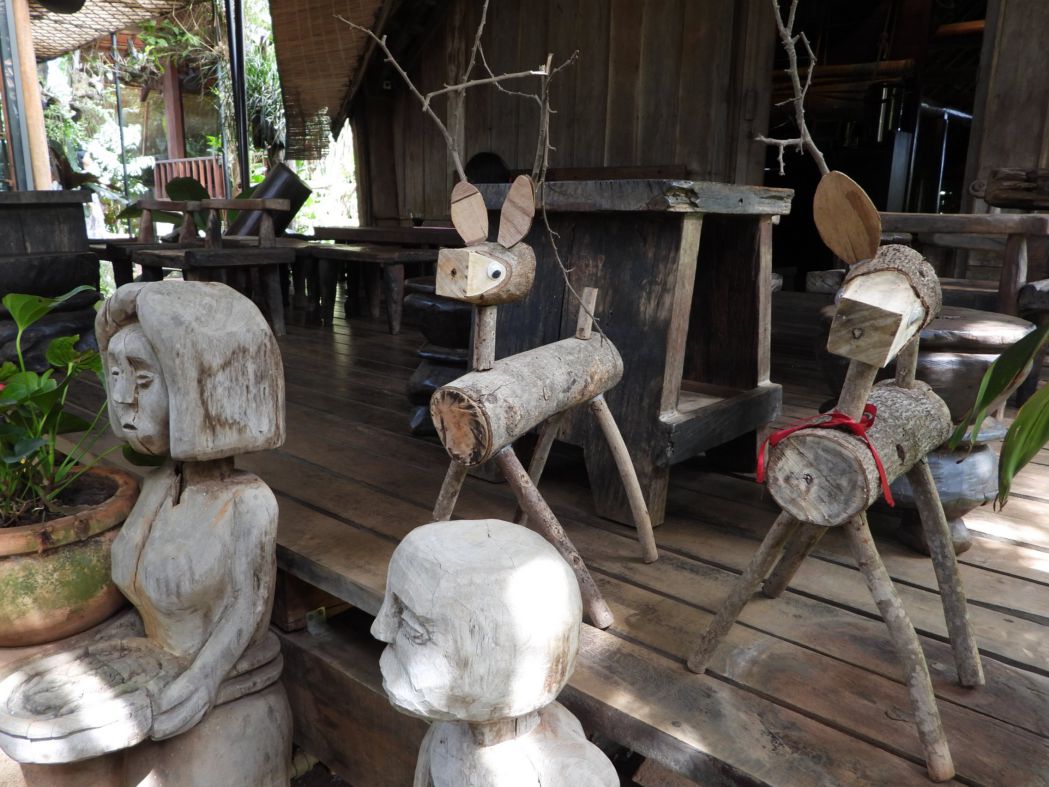
Developing community tourism
In addition to preserving traditional architecture, in recent years, the people of Ako Phong have also made efforts to develop the economy from the existing cultural values. Many households have boldly built a tourism business model associated with the De culture, both creating livelihoods and contributing to spreading traditional cultural values to tourists.
With more than 90% of its human resources being indigenous Endemic people, this place gives visitors the opportunity to learn more about the life, customs and traditional culture of the local community. Here, visitors can experience sleeping in a typical long house, enjoy dishes with mountain and forest flavors, wear traditional brocade costumes and immerse themselves in the cultural space imbued with the Central Highlands.
Thanks to efforts to preserve identity and promote tourism potential, in early 2023, Ako Phong village was recognized as the first community tourism village in Dak Lak province. This is an important milestone opening a new direction for sustainable economic - cultural development in the locality.
Mr. Y Nguyet Nie (born in 1992) is an E De ethnic group born and raised in Ako Dhong village. Before 2023, the couple only had a small vegetable stall on Trinh Cong Son Street, selling a few traditional dishes such as fried papaya, stir-fried noodles...
Mr. Y Nguyet Nie shared: "After community tourism developed, deserted villages became crowded with visitors. We decided to open a spacious restaurant called Ne La, with a menu of more than 30 dishes including all the specialties of the E De people such as bitter melon soup with beef stew, grilled stream fish with salt, Lam com, wild pork stir-fried with lemongrass and chili... with traditional cooking methods imbued with the flavor of the Central Highlands.
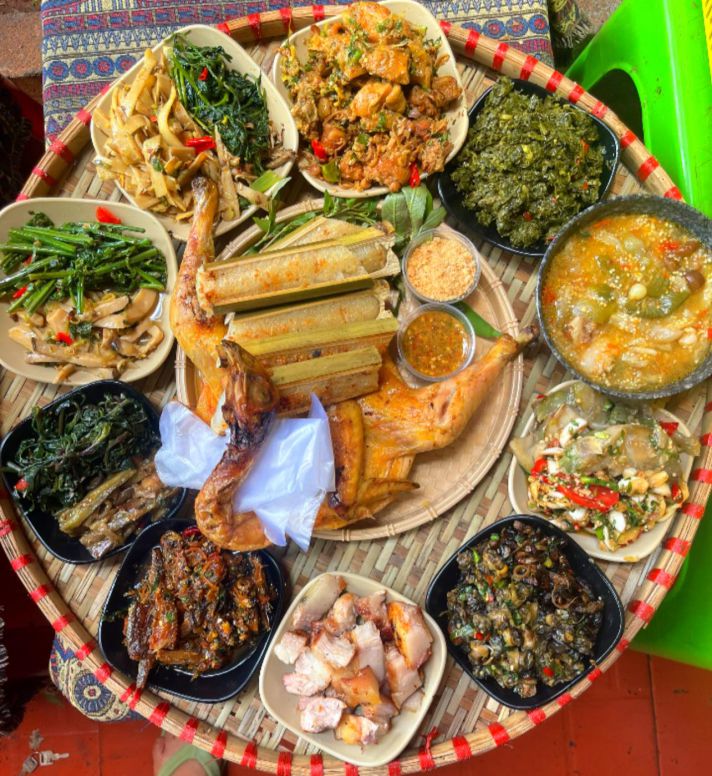
Currently, Mr. Y Nguyet Nie's restaurant has become the second most famous in the area, attracting both locals and tourists, especially on weekends. Thanks to that, the restaurant also created more jobs and income for about 10 employees, all of whom are of the Yen De ethnic group.
"Our restaurant is the first restaurant to open for sale in the village. Later, as the number of visitors increased, the community tourism village became more bustling, and many other food stalls also continuously sprung up. I am happy because the village is bustling, people have more jobs, and their lives are improved, Mr. Y Nguyet Nie said enthusiastically.
In the heart of the city, Ako Phong is like a peaceful place, where tradition and culture blend in the rhythm of human life. With its unique beauty and unique cultural and ethnic values, this community tourism village deserves to be a destination not to be missed when coming to the Central Highlands.
Implementing Resolution No. 08/ of the Provincial People's Council on supporting the development of community tourism in ethnic minority villages and hamlets in Dak Lak province in the period of 2021 - 2025, the Department of Culture, Sports and Tourism of Dak Lak has selected 5/17 hamlets to support a number of investment policies for community tourism development in the province, including Ako Dhong hamlet.
In recent times, the Department has organized training for people on tourism development, emphasizing that the development of community tourism products needs to be accompanied by people from survey to marketing and consumption. In 2024, the Dakko khuong village will welcome nearly 60,000 domestic and foreign tourists.


